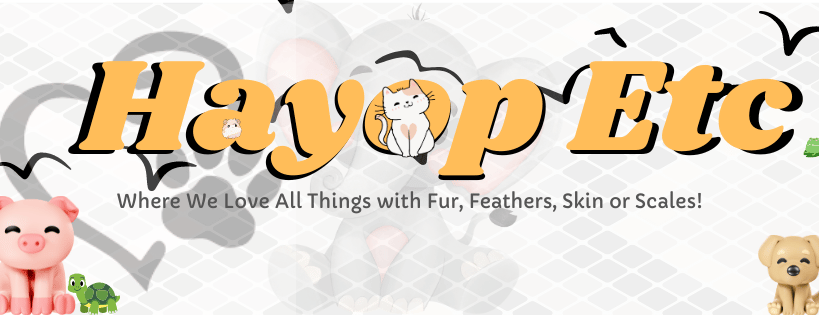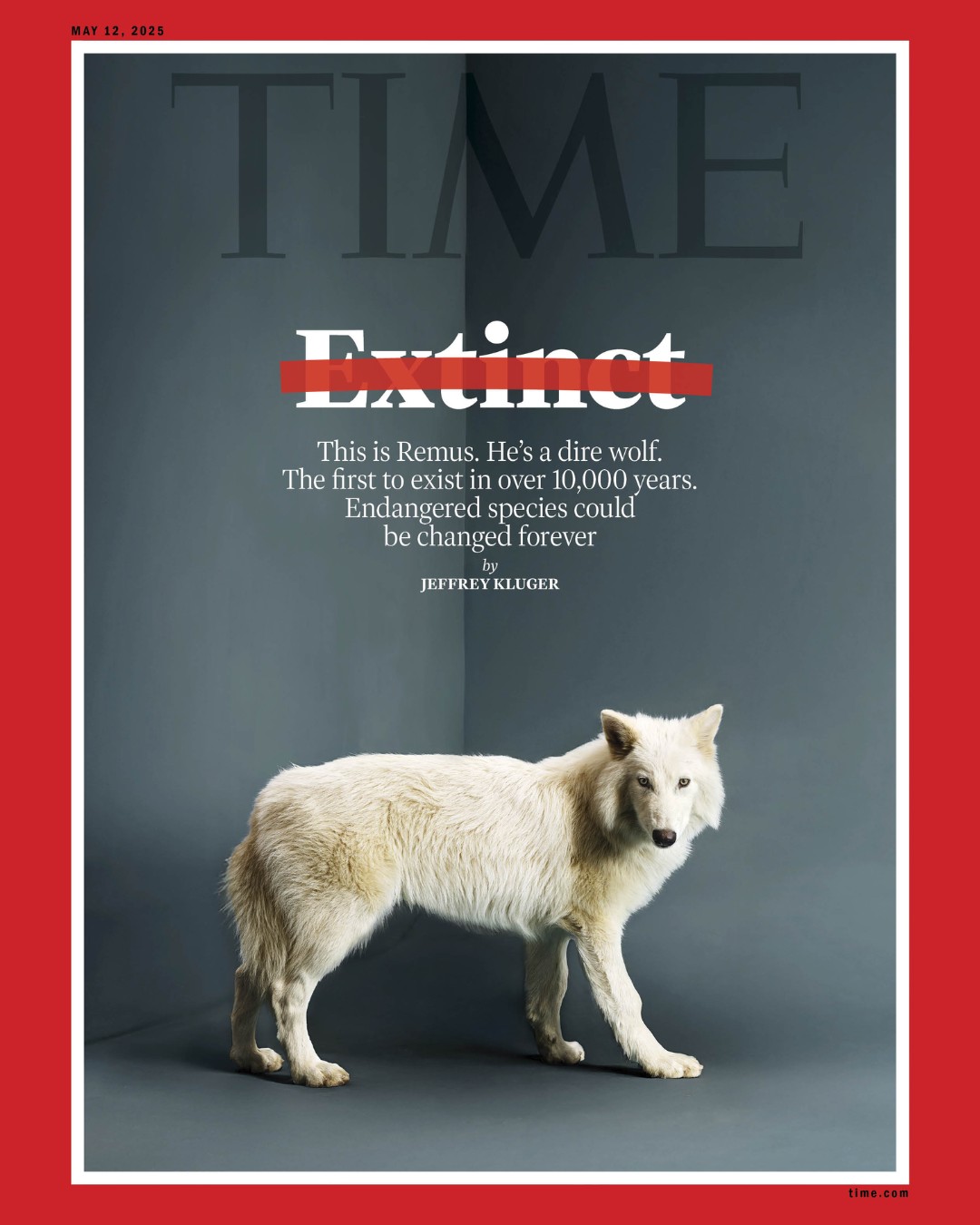
De-Extinction of a Species, What it Means, and Should We Care?
“The return of the dire wolves is not just a scientific achievement; it’s a cultural phenomenon.” – Me
My Early Fascination with Dire Wolves
For as long as I can remember, dire wolves have always captivated my imagination. Reading about them in fantasy novels, I envisioned them as immensely huge creatures, akin to werewolves.
Their portrayal in popular culture, especially in “Game of Thrones,” where characters like Ghost, Grey Wind, Lady, Nymeria, Summer, and Shaggydog became household names, only deepened this fascination.
But it wasn’t enough. I knew those were just Siberian Husky hybrids. Not really the real thing. I was imagining direwolves to look terrifying. Short snouted, powerful looking dogs that looked like a crossbreed of a bear and a rottweiler.
Boy, was I wrong when I finally laid eyes on a real dire wolf.
It was kind of a mix of disappointment and yet delight because now I finally see what I’ve always wondered about in the flesh. Okay, so I might have been wrong about dire wolves not looking anything like a traditional wolf but hey, I’ll take it.
The recent announcement of the birth of three genetically engineered wolf pups—Romulus, Remus, and Khaleesi—has ignited global intrigue.
Colossal Biosciences, announced the birth of three genetically engineered wolf pups: Romulus, Remus, and Khaleesi.
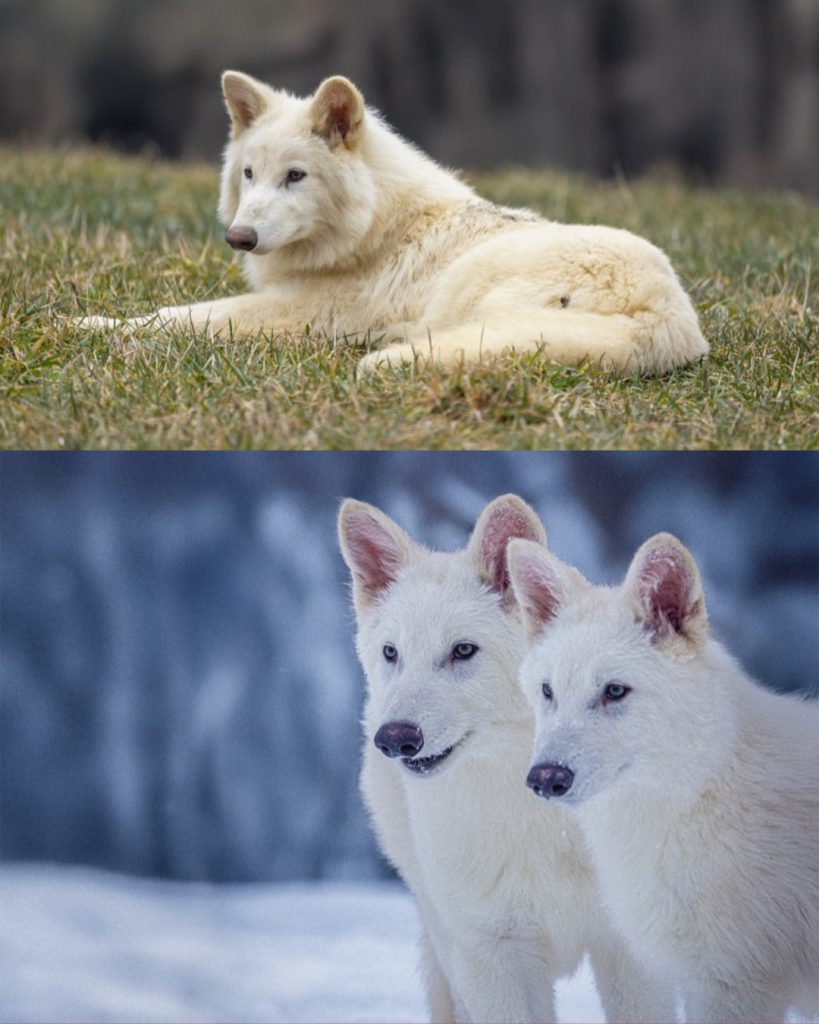
They did this by collecting dire wolf DNA and editing genes in gray wolves to instill dire wolf characteristics. These pups, designed to exhibit traits of the extinct dire wolf, have been hailed as a groundbreaking achievement in de-extinction.
But what does this mean for science, ethics, and our understanding of nature? What are the implications of bringing extinct species like direwolves, back to life?
Experts argue that these animals are genetically modified gray wolves rather than true dire wolves.
Me? I’m just happy they exist.
Understanding the Dire Wolf (Aenocyon dirus)
The dire wolf, scientifically known as Aenocyon dirus, was a formidable predator during the Pleistocene Epoch. It’s name literally translates to: terrible wolf.
Contrary to popular belief, they weren’t drastically larger than modern gray wolves but possessed a more robust build and a heavier skull. Fossil evidence suggests they weighed between 80 to 100 kg.
But an overactive mind, especially a young one can create images of immense wolves and despite reading facts over and over again, retain those images for a lifetime.
I’ve been to Wikipedia and I’ve also gone over a few books that discussed dire wolves and yet I still revert to what my mind has created as an image of them.
Now I’m not an expert on dire wolves but from what I’ve read, they are impressive creatures.
For starters, they were apex predators competing against saber toothed cats and other large carnivores in their habitat. They became extinct over time and the real reason why ha syet to be determined.
The usual suspects are climate change, loss of prey, or the emergence of newer, more powerful, or more evolved species. The appearance of man is also to blame as is with a lot of other extinct animals like the Dodo and the Thylacine.
Joe Rogan and Ben Lamm’s Conversation About Dire Wolves and the Future
In April 2025, Colossal Biosciences announced the existence of Romulus, Remus, and Khaleesi— dire wolves created using edited gray wolf DNA to mimic dire wolf traits.
I found out about this after coming across Joe Rogan’s podcast with Ben Lamm. (For those who care, it’s Joe Rogan Experience episode 2301
it’s a 3 hour-conversation with some very fascinating talking points. And oh man the things they discussed really makes me see now as the future I’d always kind of dreamed about when I was younger.
The things Colossal seems to be undertaking is centered towards giving humanity a chance. The microbe that dissolves plastic is one thing that I’m very interested in seeing fully developed and distributed by Breaking.
And I know there are going to be groups that will say something bad about Colossal being a part of these new innovations and all but so far, I think they’re really out to do good. Mind you, they’re sharing the information patent-free.
And I think this should be the trend that science and innovation should take. Free knowledge and change the way we exchange resources.
But I’m straying too much form dire wolves. Then again, this isn’t just about dire wolves but an exploration into extinct animals too.
To be honest, I didn’t really have a concrete plan what to write. And I’m just brain farting along the way because I’m still overwhelmed by the fact that 6 months ago, dire wolves came back to existence.
The Science Behind De-Extinction
So, from listening to Ben Lamm, de-extinction, or resurrection or synthetic biology, involves reviving extinct species using advanced genetic techniques. They also use AI and I think that demonstrates how useful AI can be in certain situations.
Oh, and Colossal is the first De-Extinction and Species Preservation Company in existence.
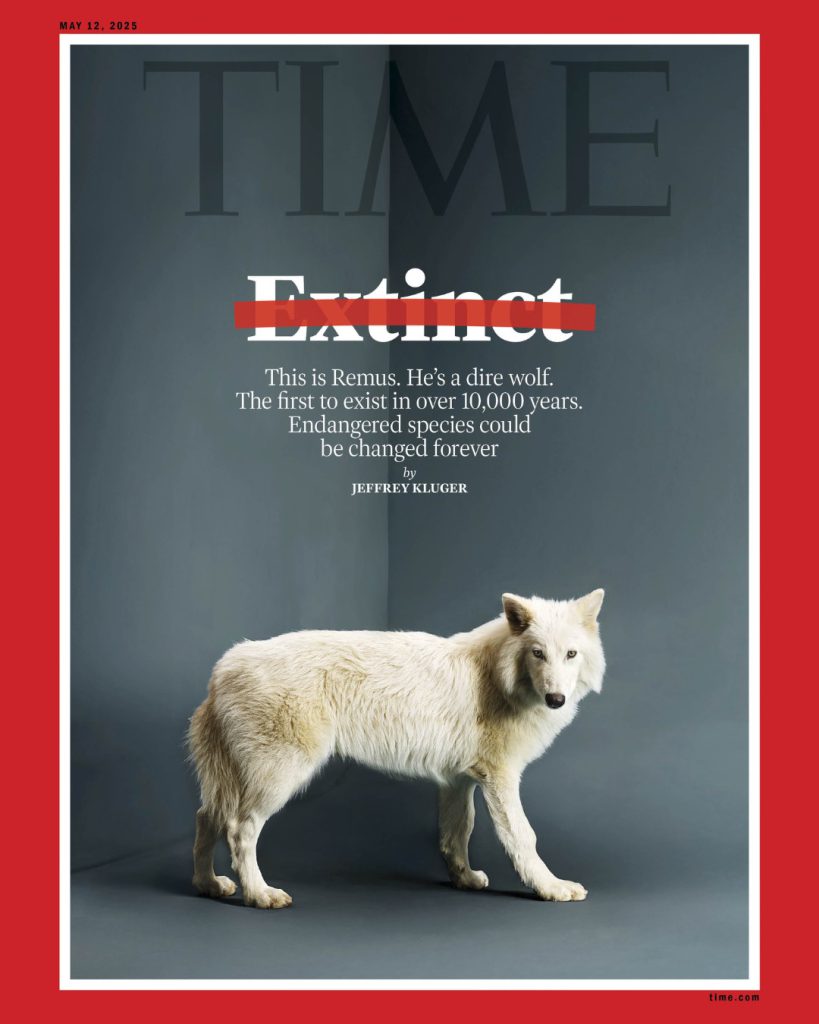
Methods include cloning, genome editing, and selective breeding. The goal is to recreate species that have disappeared, potentially restoring ecological balance and biodiversity.
Now, the idea of resurrecting extinct animals raises significant ethical questions. While some argue it’s our moral obligation to restore species we’ve driven to extinction, others worry about unforeseen ecological consequences and the welfare of these recreated beings.
I like Ben Lamm’s answer when Joe Rogan asked “where does it stop” and the guy just says they’re only bringing back species that are deemed important to an environment like the Thylacine for example to control prey species in Australia.
It’s still far off but that project is nearing completion too.
So yeah, that’s another thing I’m looking forward to see in this lifetime. Their estimated year of completion for that project is in 2032 – 2033. So not too far off in the future. I still have more than enough time to save a lot of money for my trip to Australia 😊
De-Extinction for Commercial Purposes
Another thing I was thinking about while listening to the podcast was the commercial aspect of de-extinction and cloning.
Beyond scientific curiosity, there’s a commercial angle to de-extinction. Imagine the allure of witnessing a woolly mammoth or a dodo in a controlled environment. For one, such attractions could boost ecotourism and generate significant revenue.
However, this commercialization raises concerns about the commodification of life and potential exploitation of these creatures.
I mean are we going to turn into such heartless creatures that we’ll just clone cows for food production and not think about them being living creatures in the first place? Cloning just sounds so convenient to do to raise our food supply quickly and with lesser wasted resources.
But is it the right thing to do?
What Other Extinct Animals Should Colossal Bring Back?
Aside from dire wolves, I have a list of animals I’d like to see brought back from extinction.
Bring Back the Dodo
First, the poster boy for extinction which is the Dodo. I would love to see the Dodo brought back to life. Wouldn’t that throw such a powerful message? That we as a species have the power to bring back the dead to life?
Imagine what that would do for Colossal’s public image.
Of course, one has to ask the big question: why? Why bring back the dodo?
Okay, here’s a scenario. Dodos were hunted for meat back in the day. They said the meat was not particularly tasty though but in a pinch, it would do. And because the dodo was a large bird, one animal could feed more people than a chicken could.
So, let’s say it is brought back from extinction and its numbers are raised enough to make it commercially viable for meat production, I bet that would be a good enough reason to bring back the dodo.
And about the taste, with enough talented chefs other than Gordon Ramsay these days, I believe there’ll be enough ways to prepare the bird to make it palatable.
Ok, I think I’ve reached my limit when it comes to rational thinking for the day, so I’ll stop here. Gotta get some sleep and continue later after a couple of Zzzs.
Zzzzzzzzzzzzzzzzzzzzzzzzzzzzzzzzzzzzzzzzzzzzzzzzzzzzzzzzzzzzzzzzzzzzzzzzzzzzzzzzzzzzzzzzzzzzzzzzzzzzzzzzzzzzzzzzzzzzzzzzzzzzzzzzzzzzzzzzzzzzzzzzzzzzzzzzzzzzzzzzzzzzzzzzzzzzzzzzzzzzzzzzzzzzzzzzzzzzzzzzzzzzzzzzzzzzzzzzzzzzzzzzzzzzzzzzzzzzzzzzzzzzzzzzzzzzzzzzzzzzzzzzzzz
Ok, I’ve had enough sleep.
And after reading everything from the start of this blog to this point, I realized one thing: I should not blog when I’m sleepy.
But another side of me is laughing at how scattered and unfiltered I sound.
It’s okay, I have other blogs where I edit myself a little too strictly.
This should feel like a wild animal. A little rough on the sides and unwilling to adhere to society’s standards. Alright, back to the blog.
Oh yeah, I’m not editing what’s already written. I spent too many hours reading and composing it that I believe that’s how best it should be presented, in it’s rough form.
Gigantopithecus: Just so Those Bigfoot Hunters can Finally Feel Vindicated
The idea of bringing back the Gigantopithecus, an extinct genus of ape that stood up to 3 meters tall, is both thrilling and daunting.
Reviving such a species could offer insights into primate evolution but also poses challenges in terms of habitat, diet, and integration into modern ecosystems.
I think the main reason it’d be brought back is for display purposes. A far stretch would be to use it for hard labor. But if the Bigfoot is as smart as it is reported to be, housing it in a cage, or controlling it to do manual labor is going to prove near-impossible.
Thylacine
The thylacine has also become the poster boy for extinct animals and ever since I saw old footage of the animal, I’ve always wanted to see what they look like in person.
And it looks like Colossal has the Thylacine in its plan of animal s to bring back from extinction. They’ve uncovered DNA from a mother and a cub who were mostly intact so they should have the Thylacine in circulation within my lifetime.
2033.
More than enough time for me to save up.
Woolly Mammoth
The woolly mammoth should be credited as Colossal’s launching pad because this is what they really started with. And they should have one within a decade which is cool!
Aurochs
As a farmer, I am interested in animals that have the potential to be domesticated and used for labor. So, that’s why the Aurochs makes it to the list.
For all accounts and purposes, the Aurochs looks like an extremely large bull. And with that size should come the appropriate strength which would make pulling loads easier than say the average carabao.
Smilodon (or Saber-toothed Tiger)
I had this prehistoric animals book when I was young and there was this awesome image of a saber-toothed cat in one of the pages. Ever since that day, I was hooked.
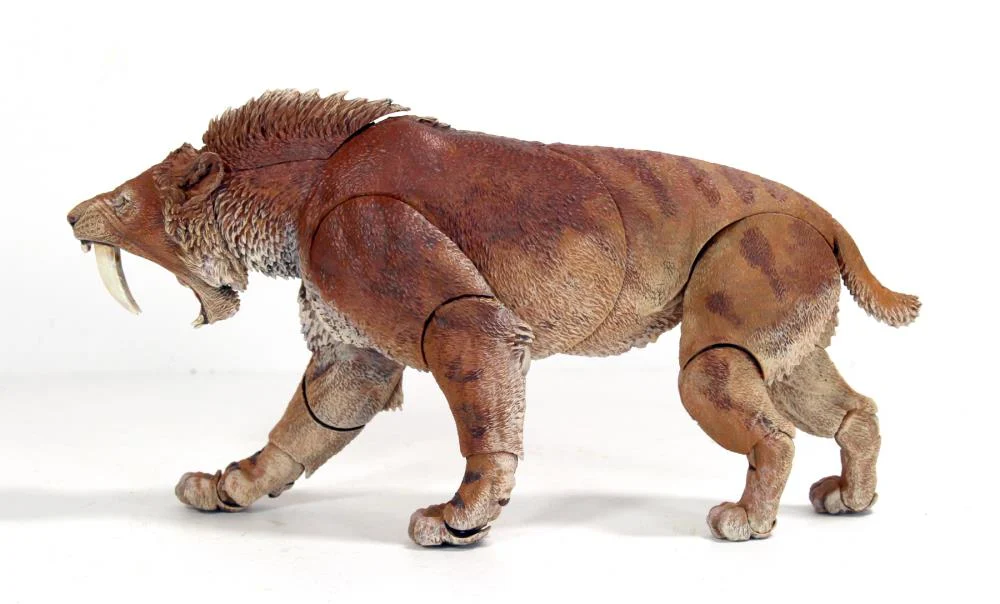
But I don’t believe bringing this animal back is a good idea simply because it’s a killer. Same with the short-faced bear.
It would be cool to see them in person but not necessary to bring back to life in the near future.
The closest (and safest) thing I can think of of getting a Smilodon is purchasing one from Big Bad Toys Store.
For more extinct animals, check this page out: A-Z Animals
Is It Safe to Keep a Dire wolf?
While the idea of having a dire wolf as a companion is enticing, it’s essential to recognize their wild nature.
These are not cute and cuddly dogs.
And a dog that big can seriously mess you up.
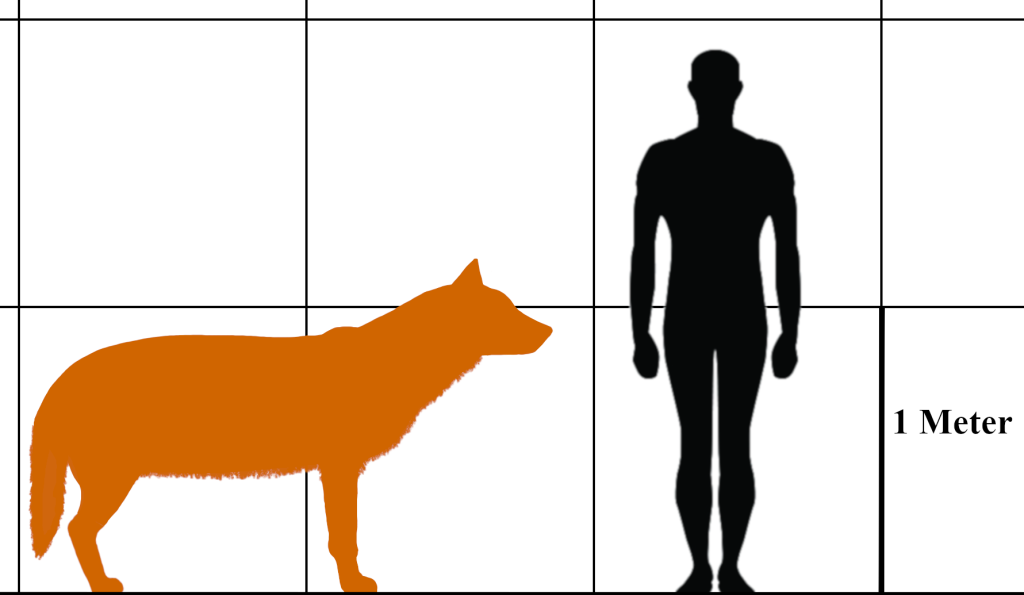
Heck, even a Chihuahua can give you big problems given the right situation.
So, even if recreated, these animals would possess instincts and behaviors that make them unsuitable as domestic pets. Safety concerns for both humans and the animals themselves cannot be overlooked.
Here are other animals you shouldn’t keep: Cobras and Wolverines.
Conclusion
The endeavor to bring back the dire wolf, or at least its traits, is a testament to human ingenuity and our relentless pursuit of knowledge. However, it also serves as a reminder of the ethical and ecological responsibilities we bear.
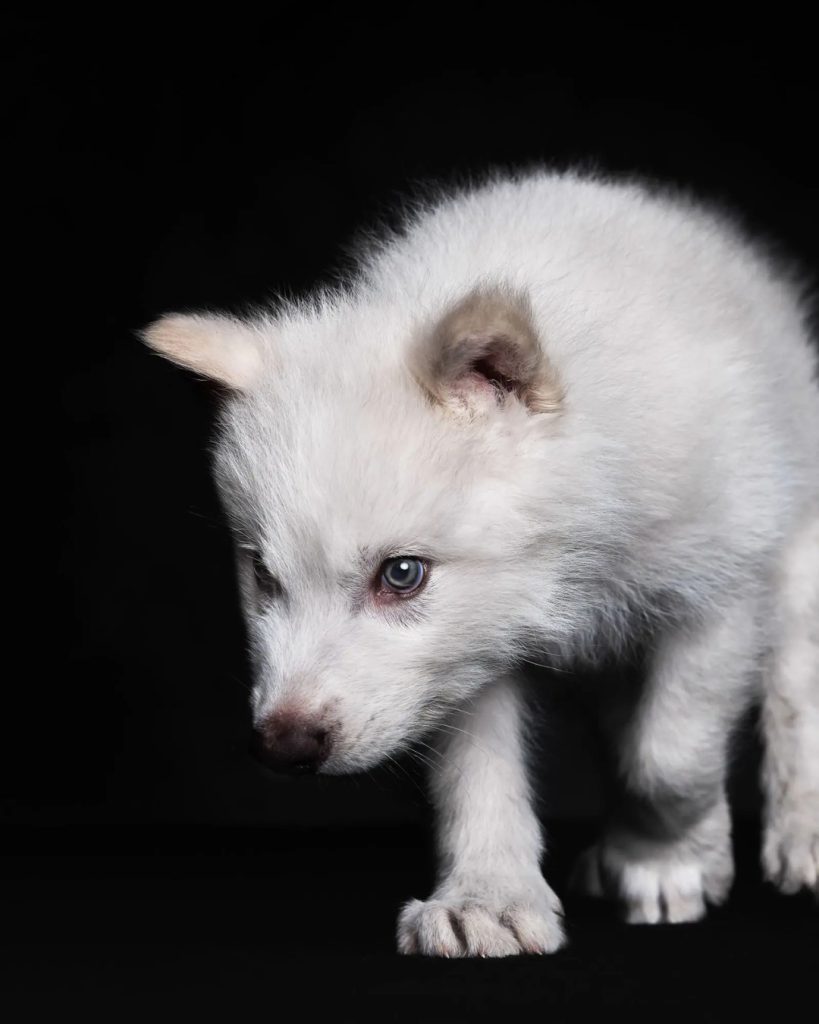
As we stand on the brink of potentially rewriting natural history, we must tread carefully, ensuring that our actions honor both the past and the future.
Note: This article incorporates information from various sources, including recent developments in de-extinction and the creation of genetically modified wolves by Colossal Biosciences.
